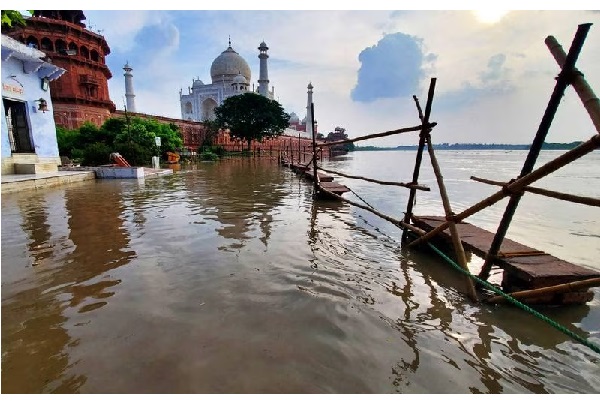NEW DELHI: Indian police said on Saturday they had arrested the social media chief of the country’s main opposition party over accusations
LUCKNOW: A river that runs through the northern Indian state of Uttar Pradesh has risen to lap the compound walls of the iconic Taj Mahal in Agra city, causing concern about damage to the 17th-century white marble monument.
The water level of the Yamuna river has increased over the last few days after unusually heavy rain in northern India, including Uttar Pradesh, which has received 108 per cent of its normal rainfall since the four-month monsoon season began on June 1.
According to India’s Central Water Commission (CWC), the portion of the river flowing alongside the Taj Mahal rose to 152m on Tuesday evening, well above the warning level for potential danger of 151.4m. The level considered dangerous is 152.4 metres.
Local media outlets reported the last time the river reached the walls of the monument was 45 years ago, in 1978.
Visuals from the area on Tuesday showed the red sandstone boundary wall of the Taj Mahal surrounded by muddy water, with the mausoleum itself looming over the scene, untouched by the river.
Officials from the Archaeological Survey of India (ASI), which oversees the Taj Mahal along with several other monuments in the country, said there is “no serious concern” about the monument at present.
“If it rains more, or the water stays this high for some days, we will need to assess the situation again,” said Raj Kumar Patel, superintendent archaeologist with ASI.
You May Also Like
LAHORE: A delegation of Tehreek-i-Tahafuz-i-Aien (movement for protection of constitution), led by its president Mahmood Khan Achakzai,
LAHORE: As Prime Minister Shehbaz Sharif pledges to “protect the interests of farmers at all costs”, the federal government appears reluctant






